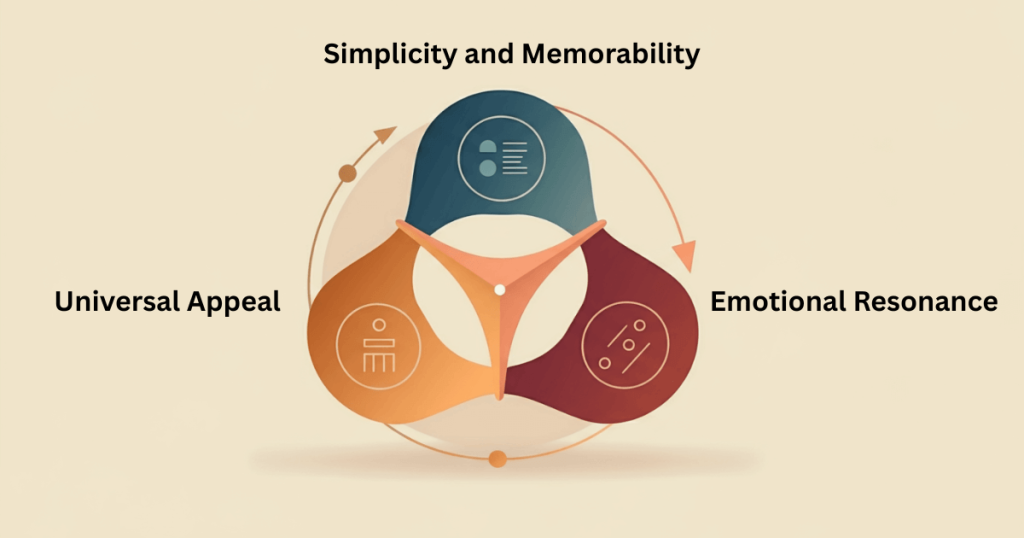Harnessing the Power of Three in Branding

Have you ever noticed how powerful the number three is in advertising? From Nike’s “Just Do It” to Apple’s sleek product design principles, this magical number underpins some of the most iconic branding in history. But why is three so effective, and how can you use it to build a memorable brand?
Welcome to our exploration of the Rule of Three in branding. By reading this post, you’ll uncover the psychology behind the rule, see how major brands use it, and learn actionable ways to implement it in your strategy.
Why Three Works the Best
The Rule of Three is a communication principle that suggests people find concepts or ideas easier to remember when grouped in sets of three. This rule is deeply rooted in human psychology and cultural influences, making it a branding superpower.
Simplicity and Memorability
Our brains are wired to process information in chunks, which is why three is seen as the optimal number to provide clarity without overwhelming people. When you hear phrases like “Stop, Drop, and Roll” or “Life, Liberty, and the Pursuit of Happiness,” the simplicity makes them unforgettable.

Emotional Resonance
The triadic structure allows brands to tap into emotions effectively. Think of phrases like “Strong. Smart. Bold.” They evoke inspiration while strengthening brand identity.
Universal Appeal
The Rule of Three isn’t just limited to one culture. Across the globe, stories, speeches, and marketing all often follow a similar pattern. From the “Three Little Pigs” to “The Good, the Bad, and the Ugly,” it’s clear this rule transcends barriers and languages.
How Brands Use the Rule of Three
Top companies and marketers have used the Rule of Three to build strong, lasting relationships with consumers. Here are some stellar examples of how the rule shines in action.
1. Taglines That Stick
Taglines are often the most prominent application of the Rule of Three. Nike’s “Just Do It” conveys empowerment in just three words, while McDonald’s “I’m Lovin’ It” taps into happiness and simplicity. Working within these constraints encourages creative, punchy messaging that resonates with audiences.
2. Product Offerings
Apple is a master of simplicity in branding. A classic example? The presentation of the iPhone’s top three features during launch events. Whether it’s speed, design, or durability, they highlight three standout qualities per product to make the message digestible and memorable.
3. Brand Pillars
Most brands define themselves by three key values. For instance, Coca-Cola’s identity revolves around “happiness, refreshment, and authenticity.” This helps the company keep its messaging focused while resonating with its audience on an emotional level.
4. Marketing Campaign Structures
Campaigns often use the Rule of Three to package their messaging. For example, Subway’s “Eat Fresh. Live Green.” slogan combines health, sustainability, and product quality into a concise, compelling pitch.
Three Ways to Apply the Rule of Three to Your Brand

Now that you’ve seen the Rule of Three in action, here’s how you can implement it into your own branding efforts.
Define Three Targeted Brand Values
Start by defining the top three values that your brand stands for. Are you innovative, reliable, and community-driven? Or perhaps you’re adventurous, authentic, and high-quality? Limit values to three to keep the vision focused and aligned with your audience.
Shorten Your Taglines or Value Statements
If your slogan has more than three words, refine it. For example, instead of saying “Our company is committed to sustainability, growth, and customer satisfaction,” simplify it as “Sustainability. Growth. Satisfaction.”
Use Three-Point Messaging in Campaigns
When crafting a new campaign, highlight three key features or benefits of the product/service. For example, if you own a skincare company, your messaging could be built around three ideas like hydration, protection, and renewal.
Common Pitfalls to Avoid
Applying the Rule of Three doesn’t mean oversimplifying or forcing it where it doesn’t naturally fit. Misusing the rule can come across as inauthentic or overly formulaic. Here are a few things to avoid:
- Being Generic
Using overused terms or clichés won’t make your messaging memorable. Be specific and unique to your brand.
- Over-Complicating It
Including a fourth idea or over-explaining each of the three components can dilute your entire message. Keep it clean and simple.
- Ignoring Your Audience
Not all audiences or industries respond well to the Rule of Three. Test different approaches to see what resonates most.
Create an Instantly Memorable Brand
The Rule of Three is one of the easiest yet most powerful tools in branding. By simplifying your messaging, evoking emotion, and engaging audiences on a universal level, the Rule of Three ensures your brand remains both consistent and unforgettable.
Now it’s your turn to apply this principle. Define your three brand pillars, craft three-part taglines, and simplify your value propositions.
Want more guidance on building an actionable branding strategy? Stay ahead of the game with our free branding guide.






